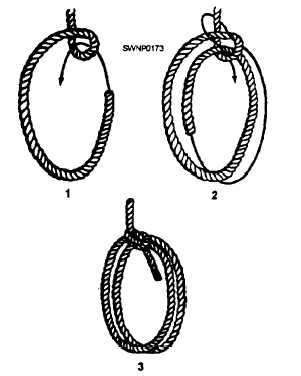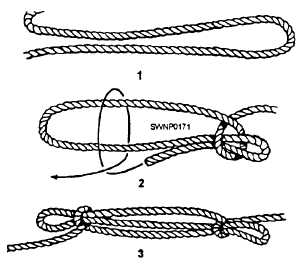(fig. 4-12, view 1). Then take a half hitch around each bight (views 2 and 3). In case you are using the sheepshank to take the load off a weak spot, make sure the spot is in the part of the line indicated by the arrow in view 2.
Bowline
The BOWLINE is especially useful when you need a temporary eye in the end of a line. It will neither slip nor jam and can be untied easily. To tie a bowline, follow the procedure shown in figure 4-13.
The FRENCH BOWLINE is sometimes used to lift or hoist injured personnel. When the french bowline is used for this purpose, it has two loops which are adjustable, so even an unconscious person can be lifted safely. One loop serves as a se at for the person, while the other loop goes around the body under the person's arms. The weight of the person keeps both loops tight and prevents the person from falling. The procedure to follow in making the french bowline is shown in figure 4-14.
Spanish Bowline
The SPANISH BOWLINE is useful in rescue work, especially as a substitute for the boatswain's chair. It may also be used to give a twofold grip for lifting a pipe or other round object in a sling. Many people prefer the spanish bowline to the french bowline because the bights are set and will not slip

Figure 4-13. - Bowline.

Figure 4-14. - French bowline.

Figure 4-12. - Sheepshank.
Continue Reading